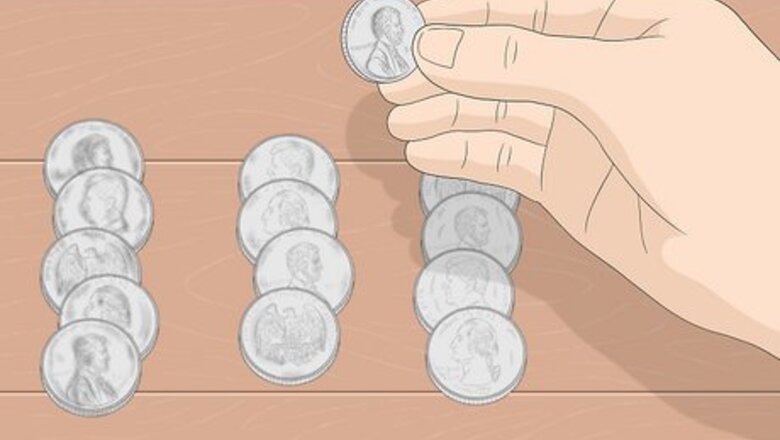
views
Using Simple Washing

Sort your coins. Before you begin cleaning, sort through the coins to determine which coins need the most work. Split your coins into three categories: showing good detail, showing some detail, and showing no detail. Start working on the coins that need the least amount of work. Dirt can probably be removed by simply soaking them in distilled water. You may want to have the coins that need a lot of work cleaned by a professional.
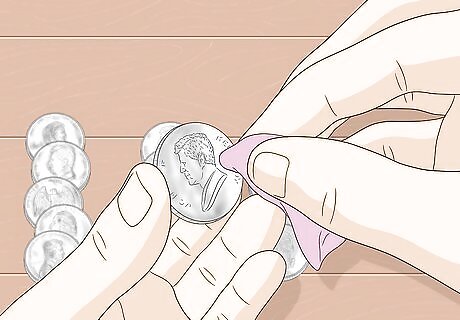
Be patient. It will take time to clean your ancient coins. Over-cleaning the coin can damage it and diminish the value of the coin. Also, some coins will have harder or more difficult deposits that will require more work. You may have to try multiple methods to get the coins clean. Start with the safest and least abrasive methods before you move on to something else.
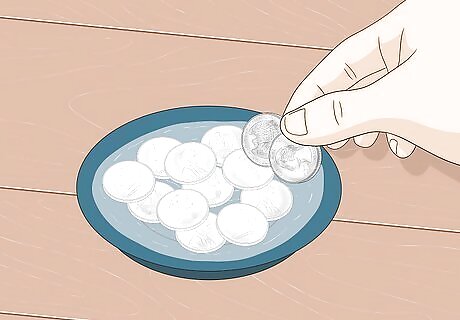
Soak in water. Place your coins in distilled water. The distilled water will absorb the materials that are on your coin and loosen the dirt. Do not use tap water because it may contain ions and mineral that will inhibit the cleaning process. Try scrubbing the coin with a toothbrush after it has been soaking for a few days. Change the water every few days as well. This is a slow process and may take many months until your coin is clean.

Use soap and water. If soaking in water alone has not helped, try to using some liquid soap to clean the coins. after you have applied soap and water to the coin, use a toothbrush to scrub the coin. If you do not have a toothbrush, you can use another stiff brush. However, never use a metal brush because the bristles will scratch your coin.

Soak in olive oil. Washing your coins with olive oil is the safest way to clean your coins as you cannot leave the coins in olive oil for too long. It has been used for years and is very reliable. Put olive oil in a closed container, and then place your coins in the container. Change the oil once or twice a month. If you want to speed up the process, gently scrub the coin with a toothbrush. Wait at least a week before you scrub the brush with a toothbrush. Scrub the coin with dish soap under running water. Place it back in the olive oil if it is still dirty. This is the slowest way to clean a coin. It may take months before you begin to see results.
Using Mechanical Cleaning Methods
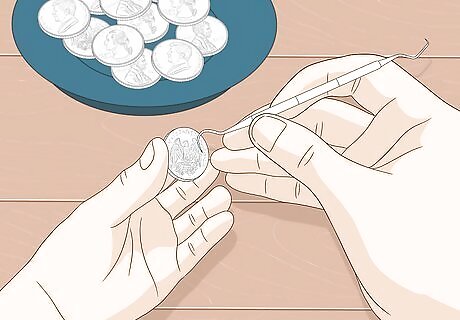
Use a dental pick. You can purchase a dental pick at a local store (e.g. Target, Walgreens, Walmart, etc.). Do not start scraping with the point of the pick. Begin by turning the pick sideways and using a circular motion to remove the dirt and debris. A circular motion is better for your coins than moving he pick up and down or left to right.
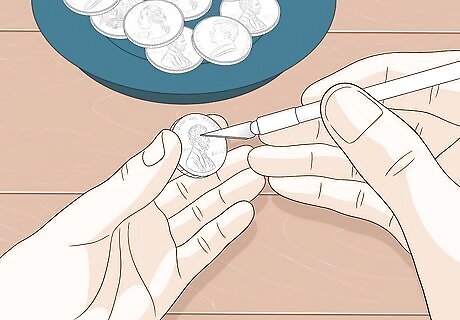
Try using a knife. An X-acto knife can be used to scrape dirt off of your coins. Always use a curved blade instead of a flat blade as flat blades can really damage your coin. Hold the coin in your hand and then use the curved part of the blade to scrape the coin. Be very careful and go slowly when you do this. Use circular motions and keep the blade as flat as possible.
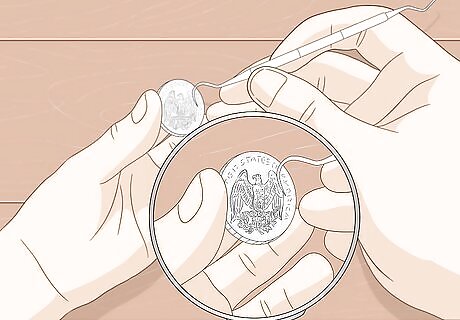
Consider using a magnifying tool. A microscope, a magnifying glass, or a table magnifier can help you with your mechanical cleaning. This will allow you to see the coin and the details better. Different areas of the coin may need a different tool, and the magnification will allow you to see that. Make sure you have good lighting when you are cleaning.
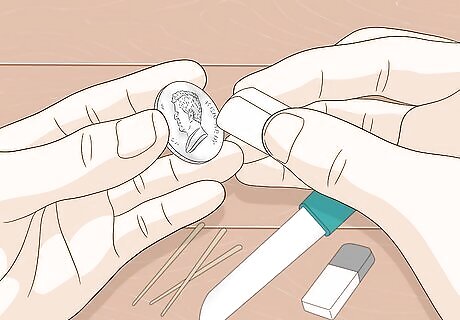
Try other hand cleaning tools. Toothpicks, plastic knives, and soft erasers can be used to clean the coins as well. All of these are made from materials that are softer than your coin so the risk of damage is minimal. Try different tools to see which works best on your coins. Also, wear safety glasses so you do not get any debris in your eyes. Work on a small area of the coin. You can apply a little bit of lubricant (i.e. olive oil) to help loosen the dirt as well.
Using Harsh Cleaning Methods
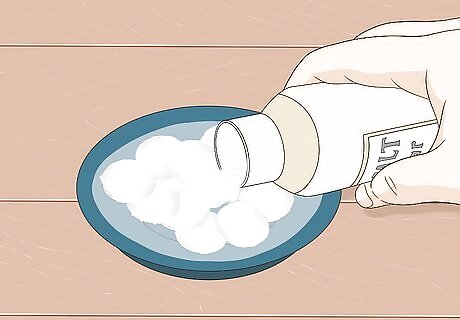
Use electrolysis. This method involves using an electrical flow to clean your coins. Wrap your coin in aluminum foil, but live the foil open around the edges a little bit. Pour malt vinegar into a shallow container and submerge the coin for 30 to 60 seconds. An electrical flow is created from the metal and the chemicals. Unwrap the coin and rub with your fingers to remove the debris. If the coin is very dirty, you may have to submerge it multiple times. You can also build an electrolysis machine using a battery/transformer, a wire, a tank, and a chemical solution. However, this is dangerous and is not recommended. There is a high probability of damaging your coin if you use this method.
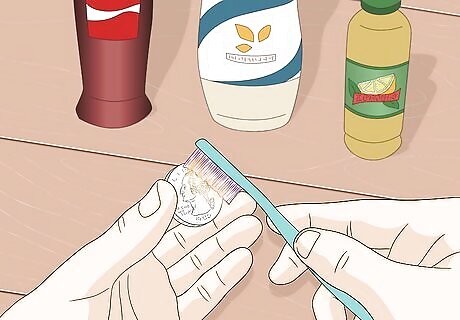
Apply chemicals to your coin. Chemicals can be used if your coin is heavily encrusted or has lime deposits. Be cautious when using chemicals to clean your coins. There is a higher chance of damaging your coin. Coca-cola, lemon juice, Noxon brass polish,, vinegar, and commercial bathroom cleaners (e.g. Lime-A-Way) are options. Let the coin sit in the chemicals for only a few minutes and then remove the coin and brush with a toothbrush. Test the chemicals with cheaper coins to see how long it take before the coin begins to erode. This can help you gauge how to treat your ancient coins. Vinegar and lemon juice are less harsh than other acids. Dilute the lemon juice with 50% distilled water and let the coins soak for 10 minutes. Chemicals should be used as a last resort.
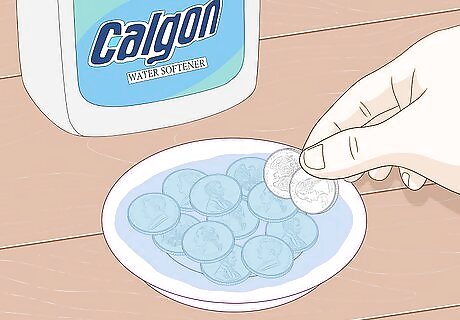
Use Calgon. Soak your coins in Calgon Water Softener to clean the coins. You can dilute the solution or use full strength solution. This will depend on the condition of your coin. Coins can be left in the solution anywhere from 1 day to 2 weeks. You must scrub the coin with a toothbrush every day when using Calgon. Check the coins to make sure that it is not being stripped by the solution.
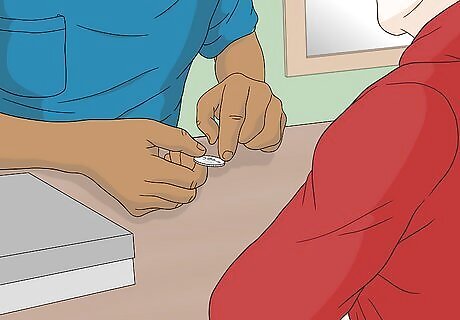
See a professional. A professional coin cleaner is most qualified to clean your coins without damaging them. The cleaner will be able to evaluate your coin and determine the safest and best techniques. Professional coin cleaners can be found through the Numismatic Conservation Services website. Your coins will lose value after they have been cleaned. It is best to take your coin to a professional cleaner.













Comments
0 comment